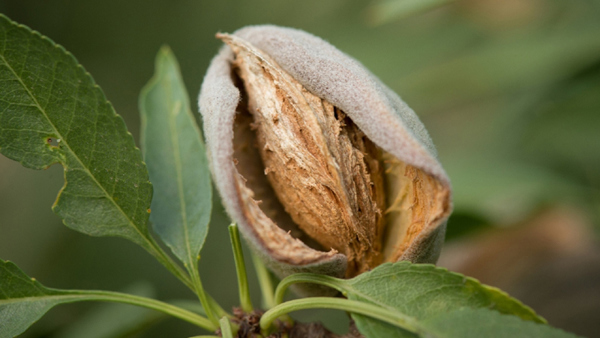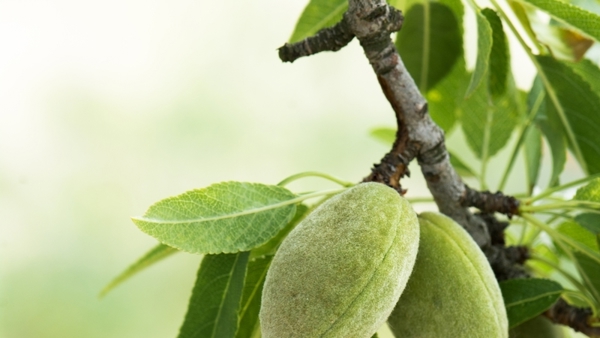Yates Account
Join now
Create a Yates account today!
Sign up to join the Yates Garden Club for monthly e-mails packed with seasonal inspiration, tips for success & exclusive promotions.
Plus if you’re a Garden Club member you can take part in the Yates Growing Community - a blog to share successes, get advice & win prizes in fun challenges along the way!

Forgot password
Enter the email address associated with your account, and we'll email you a new password.

Almonds can grow into large trees (up to 4m tall and wide) and typically, require at least two trees for pollination and fruit set. However, if you’re short on space, look for dwarf forms, which are self-pollinating (so only one tree is needed) and perfect for small backyards.
They grow best in warm and cool temperature climates, such as dry inland areas, where the summers are hot and dry, and winters are cool. Unfortunately, almonds do not not thrive in coastal conditions.
How to grow Almonds in a garden
- Choose a sunny spot with well drained soil. Enrich the soil with Yates Dynamic Lifter Organic Plant Food. If the soil is clay based, add gypsum and fork in well.
- Dig the planting hole twice as wide and to the same depth as the root-ball. Remove the shrub from the container, gently tease the roots and cut away any circled or tangled roots.
- Position in hole and backfill with soil, gently firming down. Form a raised or doughnut shaped ring of soil around the outer edge of the plant's root zone. This helps keep water where it's needed. Always water in well after planting to settle the soil around the roots and keep the soil moist for several weeks while the new plant establishes.
- Mulch around the base with organic mulch like bark chips, woodchip or pea straw, keeping it away from the trunk.
- Water regularly and deeply during the growing, flowering and fruiting season – usually from spring to autumn. While they’re drought tolerant, trees produce more almonds when they are well-watered.
- Feed your tree at least twice a year, in autumn and spring with Yates Thrive Citrus & Fruit Granular Plant Food. For an added nutrient boost, feed fortnightly Yates Thrive Fish Blood & Bone Plant Food Concentrate
- After 2-3 years, harvest almonds when the outer, fleshy hull starts to split open. You can spread a tarp under the canopy and knock the tree to collect the nuts. Repeat after a couple of weeks.


How to grow Almonds in a pot
Almonds can be grown in large pots or planter boxes, but look for dwarf, self-pollinating/fertile forms such as ‘All In One’.
- Choose a pot at least 600mm wide. Position in full sun and partially fill with quality potting mix, such as Yates Premium Potting Mix.
- Remove the shrub from the container, gently tease the roots and cut away any circled or tangled roots.
- Position in pot and backfill with potting mix, gently firming down. Water in well.
- Mulch with an organic mulch, such as bark chips, woodchip or pea straw ensuring to keep it away from the trunk.
- Water regularly and deeply during the growing, flowering and fruiting season – keeping the soil moist, but not wet. While they’re drought tolerant, trees produce more almonds when they are well-watered.
- During the growing and flowering/fruiting season, feed weekly with Yates Thrive Natural Citrus & Fruit Plant Food Concentrate to help promote nut production.
- Harvest nuts after 2-3 years. Lay a tarp under the canopy and knock the tree to encourage nuts to fall. Repeat every few weeks.
Growing tips
-
Almonds are available in two types: sweet and bitter. Sweet almonds are widely grown in the home and are ideal for eating. Bitter types are used for almond essence.
- Almonds are categorised into three shell types:
Paper shell: can be easily rubbed off by hand;
Soft shell: can be easily removed by hand but firmer;
Hard shell: similar to other nuts. - Varieties commonly used in the home garden include:
Hard shell varieties – 'Monavale'
Soft shell varieties – 'All-in-one', 'Burbank' and 'Garden Prince'
Paper shell varieties – ‘Nonpareil’, ‘Ne Plus Ultra’ and ‘IXL’ - Regardless of the variety, two compatible almond types are required for pollination and fruit set. Check plant labels when purchasing at your local nursery. If space is limited, it’s possible to buy a double-grafted tree with two varieties on the one rootstock, or look for self-pollinating/fertile varieties such as ‘All In One’.
- You can help the plants to make the most of any available water by mulching heavily over the root area with a ten-centimetre-thick layer of organic mulch. Soil wetters encourage water to move into the root zone.
- Almonds can handle cold winters, however, frost after the flowers have bloomed will wipe out the crop. Try and protect with frost cloths and blankets.
















Share
Share this article on social media